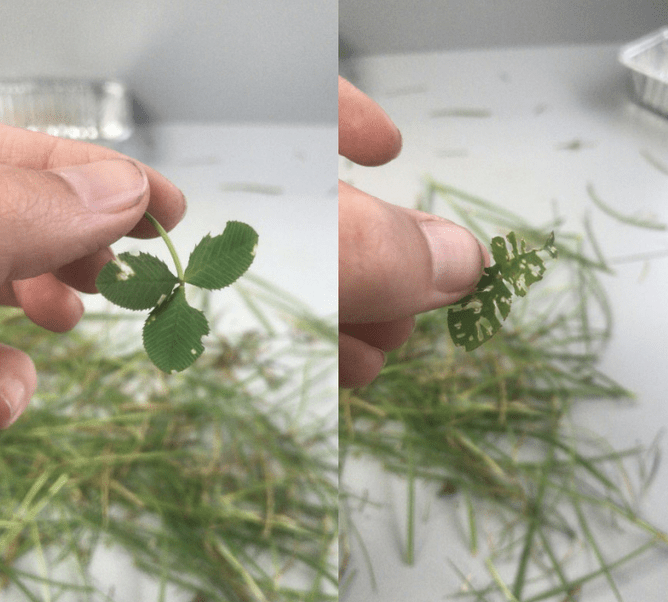With 25 mm of rain in the last 2 weeks, less wind and some N on our standard paddock, we have growth again this week! While still below demand for a full pasture diet in both the low and standard farmlets, growth is allowing us to offer approximately 15 kg DM as pasture.
Key Decisions:
Feed:
• Pasture samples taken last week came back with crude protein (CP) levels between 12% and 16%, except for the new grass paddocks which were >25%. These low crude protein contents will be one reason behind the milk production challenges we are experiencing as they are below recommended levels of >18%
• This time last year the average crude protein across the farm was 18.6%
• The ME for older pastures also dropped to an average of 11 MJ ME/kg DM, with the new grasses around 12 MJ/kg DM.
• Kale farmlet paddocks tested slightly higher for CP and energy than the FB farmlet paddocks while the Std pastures had higher levels than the LI pastures
• Interestingly, we are seeing aftermath seed head emergence in the ryegrass in several paddocks which is unusual for this time of year in Southland.
• A farm wide decision has been made to avoid grazing paddocks longer than 30 days post-grazing, in a bid to ensure that the cows are going into paddocks of better quality. This will require careful consideration of paddock order in the grazing plans for each farmlet to ensure slow growing paddocks are pulled up the grazing order and longer paddocks above them on the wedge dropped for conservation.
• Supplement will be going into all herds this week with a minimum of 3kgs DM for all herds and the LI Kale herd getting 4kgs DM.
• Round length, based on area allocation, is to remain at 30 days for all farmlets. This means we can allocate up to two paddocks per farmlet each week for 2 grazing’s rather than 3.
• Nitrogen applications will only be applied this week on the standard farmlets if there is a change in the weather forecast and more rain eventuates.
• There is a lot of willow weed in many of the new grass and crop paddocks. Once the new grass has been grazed, the mower will be used as a control method for this weed. Spraying may be required in the crop paddocks. As an annual weed, it should not continue to persist once we get it under control.
Milk:
• Production has been very variable this week across all 4 farmlets, however, given the range in CP levels from samples collected last week, especially in those paddocks with longer return times, we are confident the poor production is quality rather than quantity driven.
• Overall, the protein to fat ratio has decreased, however with a slightly lower protein (4.1 vs 4.0) and higher fat (4.9 vs 4) in the fodder beet herds their ratio is lower. With dietary energy and protein driving milk yield, this will be a contributing factor to the drop in volume over the last week.
• When looking at both litres and milk solids the Std FB herd continues to be the lowest performer. In the last week, they grazed more long grazing interval paddocks and for a couple of paddocks, total DMI was lower. Interestingly the FB herds are less likely to complain if they are tight in their paddocks, potentially another impact of the low crude protein diet as protein is important for appetite.
General Notes:
Animals:
• From this week onwards BCS monitoring will be used to identify animals that need more time to gain BCS before calving i.e. light conditioned, young, early calving animals. A list has been created of cows who need to gain more than 0.75 of a BCS unit and heifers that need to gain more than 0.6 of a BCS unit for first calvers before 25th May. Effective immediately all cows on these lists will be on OAD milking and priority inshed feeding as we prioritise conditions heading towards the end of the season.
• Two cows were tested for Johnes this week, but both have returned negative results.
Research:
• Nicole and Tash are well into the botanical composition analysis of all paddocks on the farmlet. An observation from this morning was the presence of clover root weevil and clover flea damage on the clover leaves.
• On a positive note the team have observed fewer slugs when they have been doing calibration cuts in the last couple of weeks.
Click the link below to download our full weekly notes


